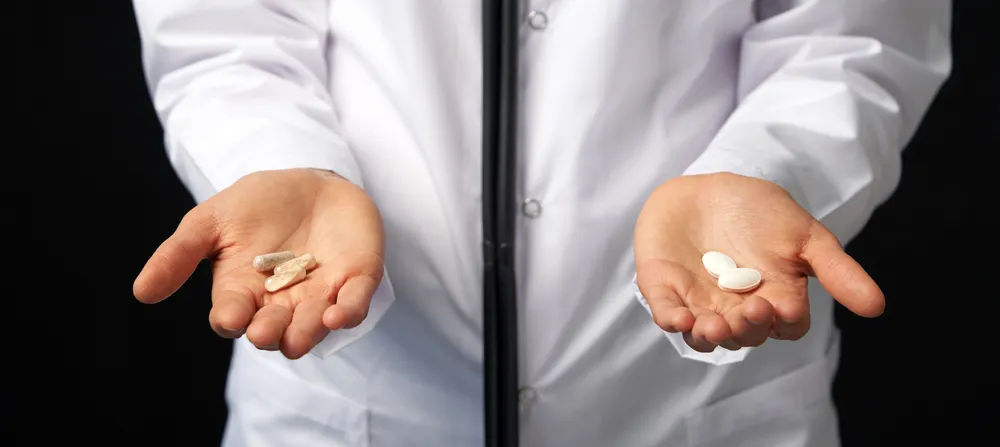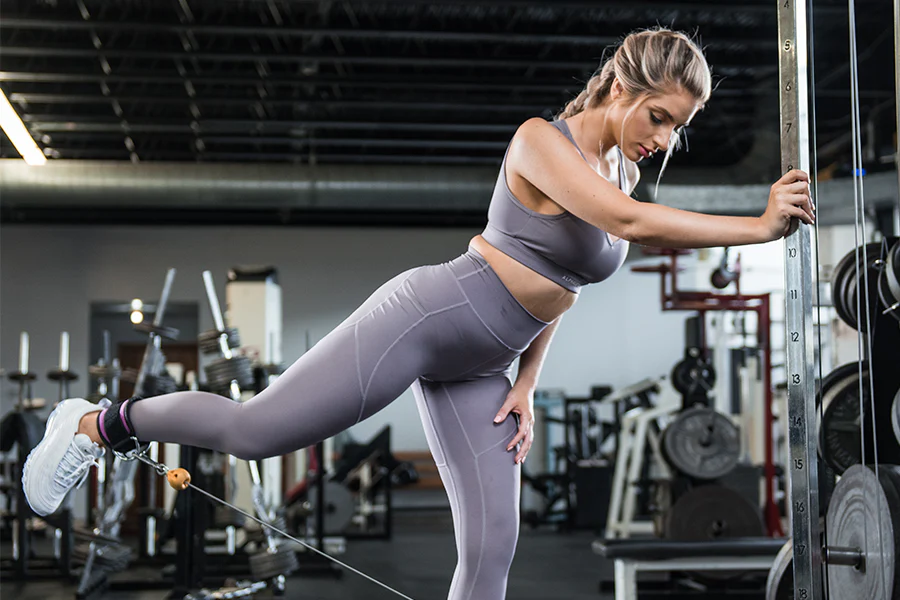
Female runner suffering with pain on sports running knee injury
One week into training for an epic mountain trail run, I felt a tell-tale pain in my lower legs. Sure enough it was the dreaded shin splints.
I was so amped to get ready for the 17-mile feat and so proud of myself for following my plan, but I had gone out too hard and upped my miles too fast. My shins were paying the price. Sound familiar?
Pesky shin splints occur when the muscles, tendons, and bone tissue around your tibia become inflamed during repetitive movements like running, according to the
American Academy of Orthopaedic Surgeons. “It’s one of the most common things I see in my office,” says Jordan Metzl, M.D., a sports medicine doctor at the Hospital for Special Surgery in New York City and author of Running Strong.
Meet the experts: Megan Roche, M.D, is a five-time national ultrarunning champion and coach with SWAP Running. Jordan Metzl, M.D., a sports medicine doctor at the Hospital for Special Surgery in New York City and author of Running Strong.
The pain along your shinbone may be sharp or throbbing, but most likely, you’ll feel tenderness to the touch. “You know you have it if, when you push on your shinbone after a run, it’s sore,” says Metzl. Another tip-off: The pain is causing you to change your stride. They aren’t necessarily the most painful ailment, but they can be so defeating.
One main way to prevent shin splints is to carefully plan out and contextualize training with a focus on building mileage gently, per Megan Roche, M.D, a five-time national ultrarunning champion and coach with SWAP Running. You should also keep an eye on other training variables. For example, if you are upping your intensity, changing your training surface, or adding in frequent hill workouts.
Read on for all the ways to prevent shin splints, stretches to help relieve shin splints, and gear that can help ease the pain, according to experts.
What causes shin splints?
There are a few reasons you’re suffering from shin splints. Here’s what the experts say is behind the pain:
- Too many miles. Most likely, you ramped up the mileage too quickly, which can irritate the shinbone, says Metzl. (That’s exactly what happened to me.)
- Changing surfaces. Transitioning from treadmill to outdoor running or not wearing the right shoes can also contribute to shin splints, says Nicole Hengels, CSCS, marathon runner and owner and founder of Momentum of Milwaukee.
- Lots of road running. Road running can spur shin splints, says Jessalynn Adam, M.D., attending physician in sports medicine at Mercy Medical Center. Roads tend to have a slope near the side (where you run) to help water run off, but it also means you’re running on an uneven surface—and that can set you up for shin splints.
- Running form probs. Shin splints may also be indicative that something is off with your running mechanics. “Most commonly, a runner’s feet are flat and rolling in,” says Metzl. This is known as pronating. Or, your running stride is too long. “You might feel like you’re running like a gazelle, but this puts more loading force on shins,” he says.
- Weaker bones. Your bone density may also be low, says Metzl. This can be caused by genetics, dietary problems (if you don’t get enough calcium or vitamin D), or hormonal issues.
Pro tip: If there’s no pain when you touch the bone, but there’s tightness when you run, that could be what’s called exertional compartment syndrome, which is something else entirely and requires a doctor visit.
Wondering if you can avoid or prevent shin splints? The answer is a resounding yes. You don’t have to suffer through shin splints as a runner. There are plenty of effective ways to avoid them. Here’s what the experts recommend for preventing shin splints before they start:
- Ditch the worn out shoes: Not wearing the right shoes, or slogging along in worn out shoes, can definitely contribute to shin splints. Aim to replace your running shoes every 300 to 500 miles to keep the cushion and support fresh. You can also head to your local specialty running store for a gait analysis, Adam says. “They’ll give you form suggestions and recommend particular running shoes that can help,” she adds.
- Gradually increase mileage: Like Roche said, plan out your training weeks so that you can gradually increase mileage. A good rule is to increase your miles by only 10 percent each week.
- Cross train: You can build muscle and endurance with other activities beyond running. “You want to cross-train at the same time to make sure you’re not doing too much, too soon,” says Rachel Triche, M.D., sports medicine specialist, orthopedic foot and ankle surgeon, and team physician for the U.S. Soccer Women’s National Team. That means adding in activities like biking, swimming, and strength training. When strength training, add in moves that work on strengthening your foot muscles and arches (more on that below), and even hips and core to help prevent overloading and overworking the shins.
- Take your vitamins: Optimize your bone health by getting enough calcium and vitamin D, both of which can help prevent progression from shin splints to stress fractures.
How To Treat Shin Splints
Sometimes you can do everything right and shin splints still get the best of you. If that happens, take a breath. “Remember that for most of us, our goal is to remain a lifelong runner,” says Hengels. “Make sure you are healthy first, and focus on the finish line second.” Here’s what to do when shin splints strike, straight from the experts:
- Don’t just “tough it out.” You may be tempted to grin and bear it, but that is a big mistake. Running through the pain can cause a stress fracture, turning what should be three weeks of recovery into something that takes months to heal, says Metzl. Your first move after feeling pain should be to see your doctor for a diagnosis.
- Try some “relative resting.” Take a break for at least two weeks, Metzl recommends. Then, add in biking or swimming as a low-impact way to keep up your cardio fitness while you work with a doctor to figure out what’s going on. You may also want to combine this time off with physical therapy, based on your doc’s recommendation.
- Treat the area. You can try to improve healing by icing tender areas—20 minutes on, 20 minutes off, per the American Academy of Orthopedic Surgeons. You can also take an OTC anti-inflammatory medication after you run if it’s really killing you, Triche says. (But yeah, if it’s that bad, maybe just rest?)
- Get the right gear. Finding the right pair of running shoes for your body and fitness goals is key.
- Fix your form. If you are really serious about running and can’t seem to get rid of shin splints, Roche recommends finding a coach or sports doc to do a biomechanical analysis. They can do a video or 3D motion analysis to hone in on your form and identify problems. “Staying off your feet will fix the pain, but not the cause,” says Metzl.
- Ease back in. When you think your shins are ready for it, you’ll want to slowly transition back into your running routine, Triche says. “If you go back and it hurts, you’ll need to back off again,” she adds.
- See a doc. If it feels like you’ve been dealing with shin splints forever and they’re not getting better, head to the doctor, Adam says. You may need physical therapy to try to correct your gait and get you back into the game. A new strength routine to target your hips and butt muscles may also help take force off the shinbone as you run.
Stretches To Relieve Shin Splints
The following stretches focus on both your shins and calves, so you are getting an all around lower-leg massage. Talk about sweet relief!
Seated Shin Stretch
“This stretch can be easily modified based on your symptoms as you can control the range of motion and how deep of a stretch you get,” says Zach Kirkpatrick, a physical therapist and clinic manager for Athletico Physical Therapy. “Bonus: It’s also a nice quad stretch as well.”
- Start in a kneeling position on a soft surface or mat, with your shoulder, hips, and knees aligned and the tops of your feet resting on the floor.
- With straight arms, place your hands on the floor behind you under your shoulders and lower your butt to rest on your heels.
- Begin to slowly lean your torso back as you shift your weight into your hands. You should feel a stretch in the front portion of your lower legs, which remain on the mat.
- Hold the position for 30 seconds. Repeat three times.
Pro tip: Control the depth of this stretch to match your comfort level.
Gastroc Stretch On A Step
This stretch is a top rec for running clients from Grant Radermacher, a sports chiropractor who focuses on active rehab therapy at Ascent Chiropractic.
- Start standing with your toes on the edge of a step and heels hanging off the edge. Hold onto a wall for support if needed.
- Keep your knees straight and allow one heel to drop down until you feel a moderate intensity stretch in the calf.
- Hold this position for 10 seconds.
- Contract your calves and extend both ankles as far as your range of motion allows into a calf raise.
- Slowly lower your heel and try to get slightly deeper with the stretch. That’s one rep.
- Repeat for 10 reps, then switch sides.
Foam Roller Calf Stretch
Your foam roller is going to be your best friend when it comes to shin splints. It will help loosen up the tight, connecting fascia (tissue that surrounds your muscles).
- Start by sitting on a mat with your legs extended in front of you.
- Place your foam roller underneath your calf, above your ankle, on the right leg. Bend your left leg and place the foot flat on the ground for support.
- Place your hands on the mat for support and lift your butt off the floor. Slowly move your body back and forth so that your calf is rolling over the foam roller.
- Switch legs and repeat.
Foam Roller Shin Massage
“Foam rollers are great ways to promote blood flow and reduce tight shin splint trigger points,” says Roche.
- Start on all fours with your hips over your knees.
- Place a foam roller under your right shin. Using your arms and torso, gently rock your body back and forth so that your shin rolls slowly over the foam roller.
- If you want more intensity, extend your left leg back and balance on your toes. This adds more weight and pressure to the rolling leg.
- Switch legs and repeat.
Bottom line: There are many effective ways to prevent shin splints from happening and treatment options for shin splints when they do, so you don’t have to suffer through pain on the run.
Jessica Migala is a health writer specializing in general wellness, fitness, nutrition, and skincare, with work published in Women’s Health, Glamour, Health, Men’s Health, and more. She is based in the Chicago suburbs and is a mom to two little boys and rambunctious rescue pup.















